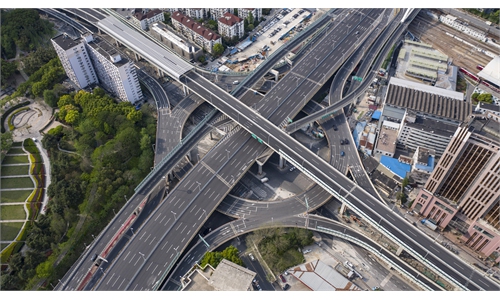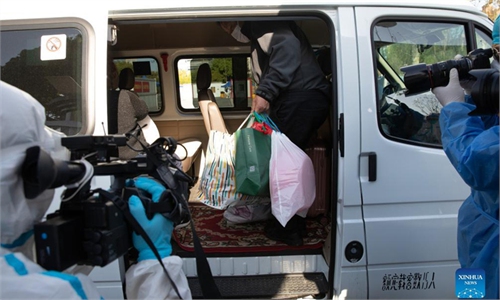
A medical worker guides a resident to do antigen home-testing in Shanghai, April 3, 2022. Photo: Xinhua
The Chinese Center for Disease Control and Prevention issued specific instructions for home quarantine receivers on late Wednesday, which require independent toilet.The CDC said there must be an independent home with an independent toilet for those receiving home quarantine. If those conditions cannot be met, home quarantine is not recommended. Besides, houses used for quarantine should have good ventilation. Air conditioners are not recommended.
Assessment by health institutions and communities are requested before home quarantine is allowed, and during the quarantine period, people should not step out of the house or receive any visitors, according to the instruction.
Going out to see doctors is permitted after approval from the local community. They will be in a closed-loop management. Those who live together with those quarantining at home should wear masks and disinfect themselves properly, the release from the CDC noted.
The release quickly attracted wide attention on social media as it comes amid recent calls among health experts to explore the feasibility of home quarantine for asymptomatic cases as a possible way to deal with the outbreak.
The instruction doesn't apply to asymptomatic COVID-19 patients in general and conforms to requirement of the current eighth edition of COVID-19 playbook.
It applies to four groups: close contacts and special secondary close contacts such as children aged below 14; pregnant women or those with underlying diseases; inbound travelers who receive "7+7" quarantine; recovered patients and asymptomatic patients discharged from hospitals or quarantine; and those who cannot receive centralized quarantine after professional assessment.
Wu Zunyou, chief epidemiologist at China's CDC, recently said it is risky for asymptomatic COVID-19 patients to stay home instead of a centralized quarantine, as they might cause further transmission and miss the optimal treatment period.
Liang Wannian, head of the COVID-19 Expert Team of the National Health Commission (NHC), said at a press conference on Sunday that if people are isolated at home, facilities and equipment like sewers and ventilation systems always present a risk of transmission.


